Spanish Team Discovers Lost Ruins of Inca Guerrillas
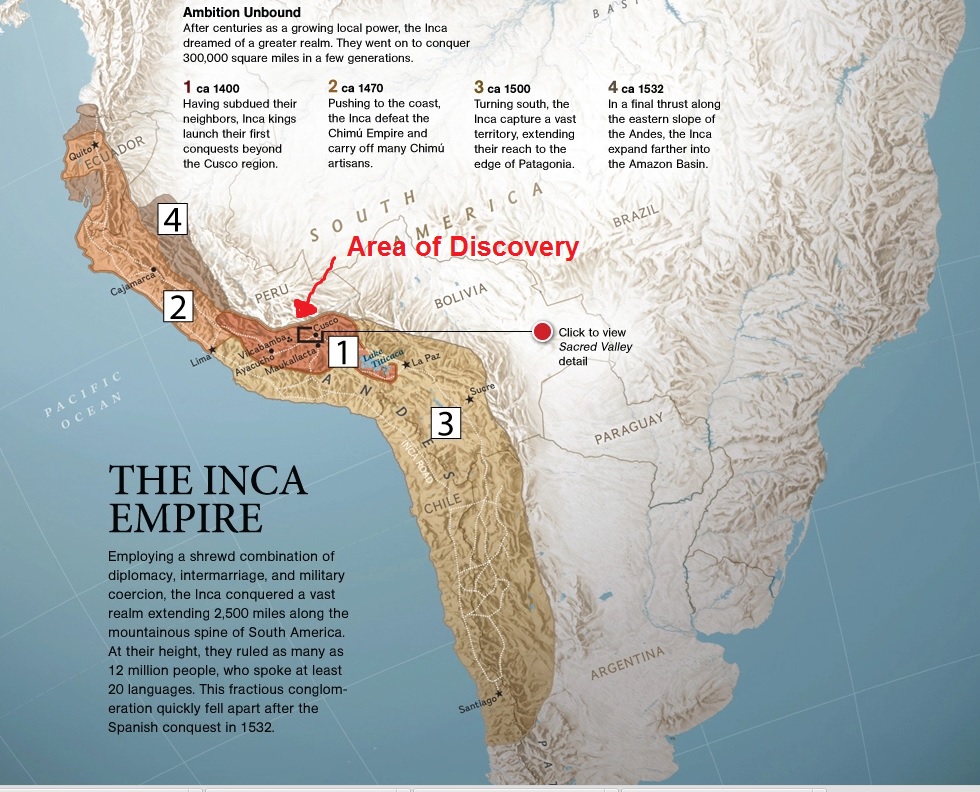
Map of the Inca Empire and location of discovery
A team of Spanish explorers and scientists, using satellite imagery, discovered in mid-September a previously unknown Inca site some 150 miles north of Cusco. Using computer imaging software, the expedition reached a mountain top and discovered some 50 structures and an Incan cemetery complete with skeletal remains. In addition, near the summit, the team discovered structures that resemble those involved in human sacrifice, or capacocha, found elsewhere in the Andes. According to the team, it’s possible that the site was used by Incas after the initial conquest of the Inca Empire by Francisco Pizarro, during the period of nearly forty years when a rump empire of Inca guerrillas existed in the Vilcabamba area. In 1572, the Spaniards invaded Vilcabamba, captured the final Inca emperor, and beheaded him in the main square in Cusco.
(more…)
Atahualpa: The Inca Lord Who Lost an Empire
posted on September 21st, 2014 in Incas, Peru
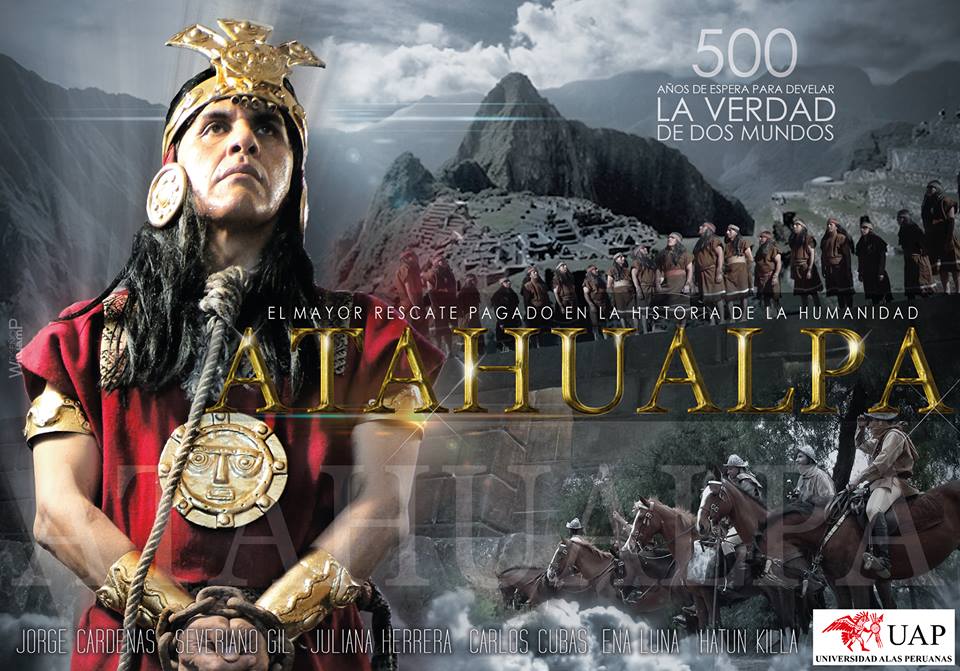
The Inca Emperor, Atahualpa
Atahualpa: Emperor of the Incas
Note: Atahualpa, lord of the Incas, was captured in Nov of 1532 by 168 Spaniards. Atahualpa was captured in the Inca town of Cajamarca, in what is now northern Peru. The following is an extract from The Last Days of the Incas:
“Most Inca accounts state that after [Atahualpa’s father] Huayna Capac‘s death, the latter’s son Huascar was crowned as emperor in Cusco, a thousand miles to the south. Another son, Atahualpa, remained in Quito, meanwhile, which Huayna Capac had made into an ancillary capital during his constant campaigns in what is now Ecuador. Born from different mothers, Atahualpa and Huascar were half-brothers.
(more…)
Pachacutec: Incan Emperor Who Created Machu Picchu
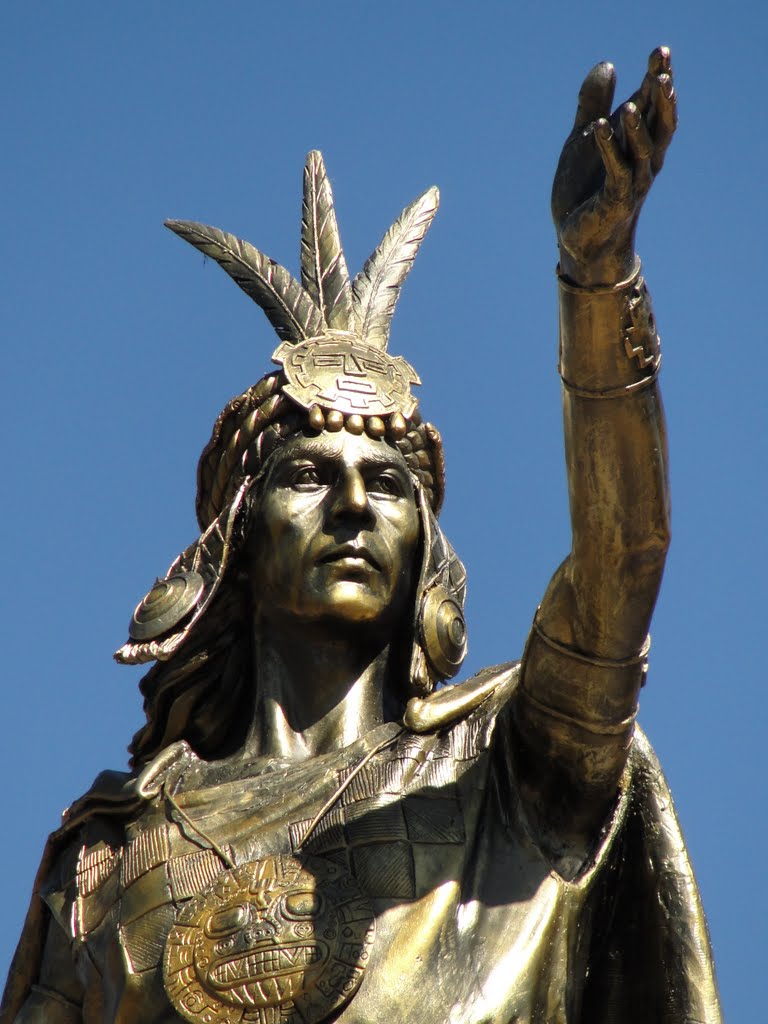
Pachacutec: The Incan Emperor Who Built Machu Picchu
By Kim MacQuarrie
(Excerpt from the book, Machu Picchu: Song of Stone)
According to Inca oral history, in the early part of the 15th century an Inca king arose who would not only revolutionize the entire Andean world but who would also create some of the finest architectural monuments ever known. At the time, the Incas lived within a small kingdom centered around the valley of Cuzco, one of many such small kingdoms in the Andes and on the coast. The Incas told the Spaniards that, at the time, they were led by an old Inca king named Viracocha Inca. Faced with an approaching army from the powerful kingdom of the Chancas, the Inca ruler fled, leaving his adult son, Cusi Yupanqui, behind. The latter quickly took charge, raised an army, and somehow miraculously defeated the invaders. Cusi Yupanqui then deposed his father, arranged for his own coronation, and changed his name to Pachacutec, a Quechua word that means “earth-shaker” or “cataclysm,” or “he who turns the world upside down.” The name was a prescient one, for Pachacutec would soon turn the status quo of the Andes entirely upside down.
(more…)
FX Channel Developing 10-12-Part Series on book, “The Last Days of the Incas” by Kim MacQuarrie
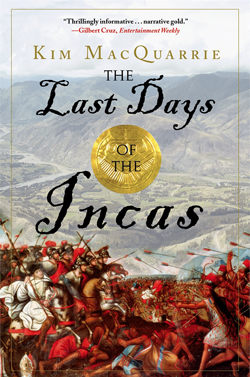
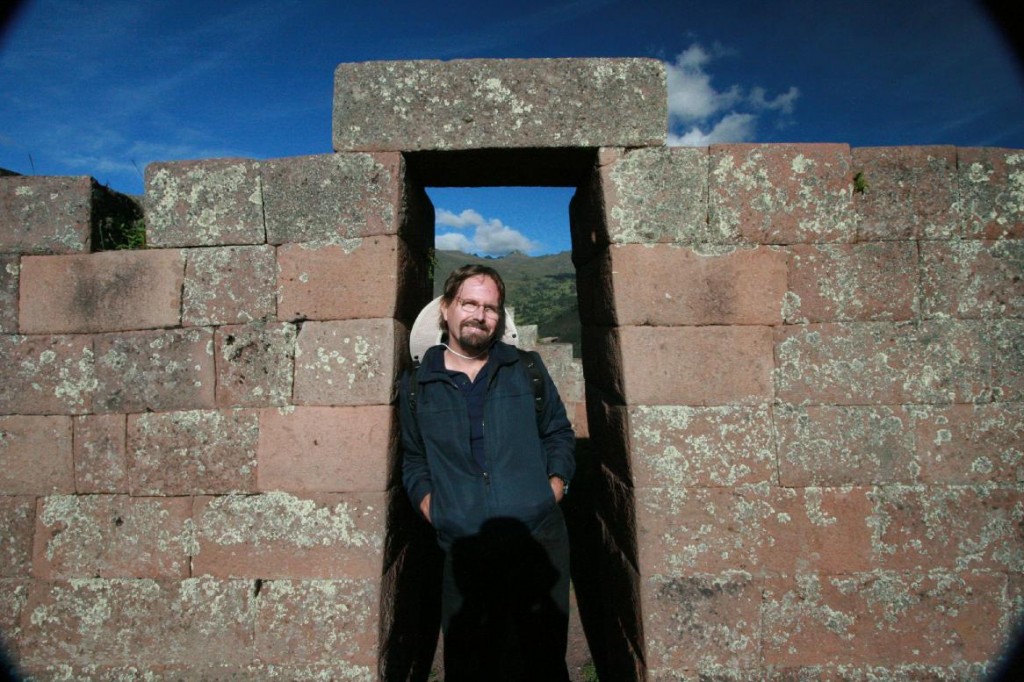
(Author Kim MacQuarrie at the Inca ruins of Pisac in the Sacred Valley of the Incas, Peru)
FX Developing Limited Series About The Fall Of The Inca Empire
Deadline Hollywood
By NELLIE ANDREEVA
April 2, 2013
FX is adding another project to its growing slate of event limited series. The cable network is developing Conquistadors, an adaptation of the Kim MacQuarrie book, The Last Day’s Of The Incas. Written by producer Nicholas Osborne in his writing debut, Conquistadors tells the story of Francisco Pizarro and Diego de Almagro, two Spanish Conquistadors who above all odds conquered the Incan empire of 10 million with just 168 men, and Manco Inca and Cura Occlo, two teenage Incan royal lovers, who led one of the greatest rebellions in history. Osborne is executive producing with Scott Rosenbaum, who serves as showrunner, and Underground Films’ Trevor Engelson.
(more…)
Possible Mausoleum with Gold, Silver & Mummies Discovered at Machu Picchu
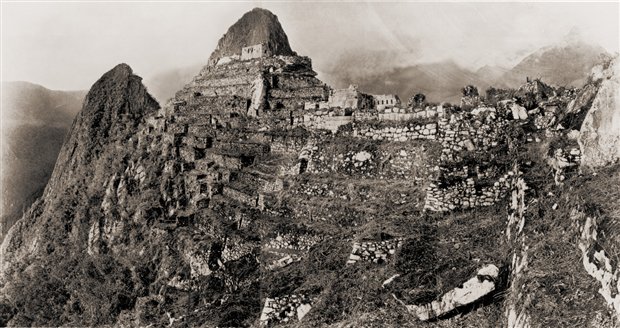
Machu Picchu
Machu Picchu Inkari Research Institute discovers Inca mausoleum with large quantities of gold and silver. However, the [Peruvian] Ministry of Culture has stalled the project.
Rumbos
Feb 8, 2013
(Translated by Kim MacQuarrie)
Who would believe it? Millions of tourists and thousands of archaeologists have walked before the walls that hide perhaps the best kept secret of Peruvian archeology: the final resting place of the Inca [emperor] Pachacutec.
(more…)
Did Ecuador Discover the Last Inca Emperor’s Tomb?
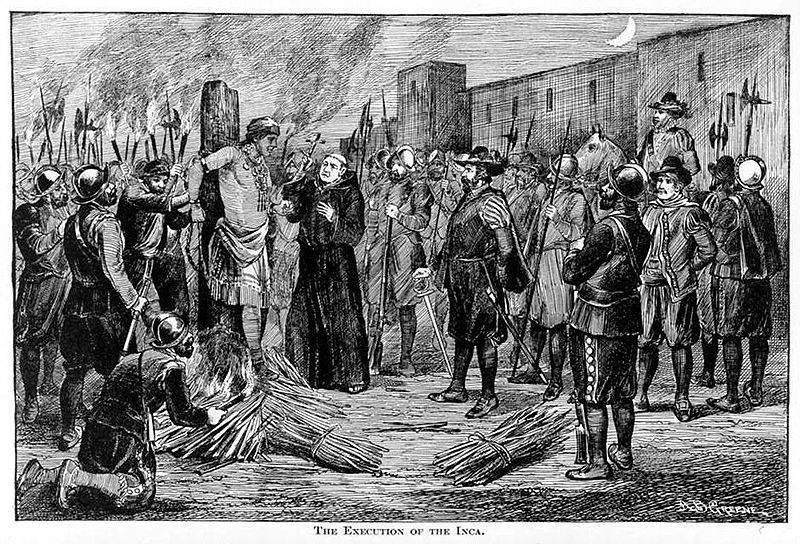
The execution of the Inca emperor, Atahualpa, by the Spanish conquistadors in 1533
(Note: In 1533 Francisco Pizarro captured and executed the Inca emperor at the time, Atahualpa. However, after Atahualpa’s death, three more Inca emperors ruled from the Incas’ rebel capital of Vilcabamba: Sayri Tupac, Titu Cusi, and Tupac Amaru. The Spaniards executed the final Inca emperor, Tupac Amaru, in Cuzco in 1572–almost forty years after Pizarro’s arrival–Kim MacQuarrie).
Ecuador may have found last Inca emperor’s tomb
Agence France-Presse
February 29, 2012
It has been sought for centuries but remained a mystery, still out of reach. Now an expert has pinpointed a site that could be Atahualpa’s resting place: the last Inca emperor’s tomb….
(more…)
Discovery of Sacred Inca Stones Linking The Heavens With Earth
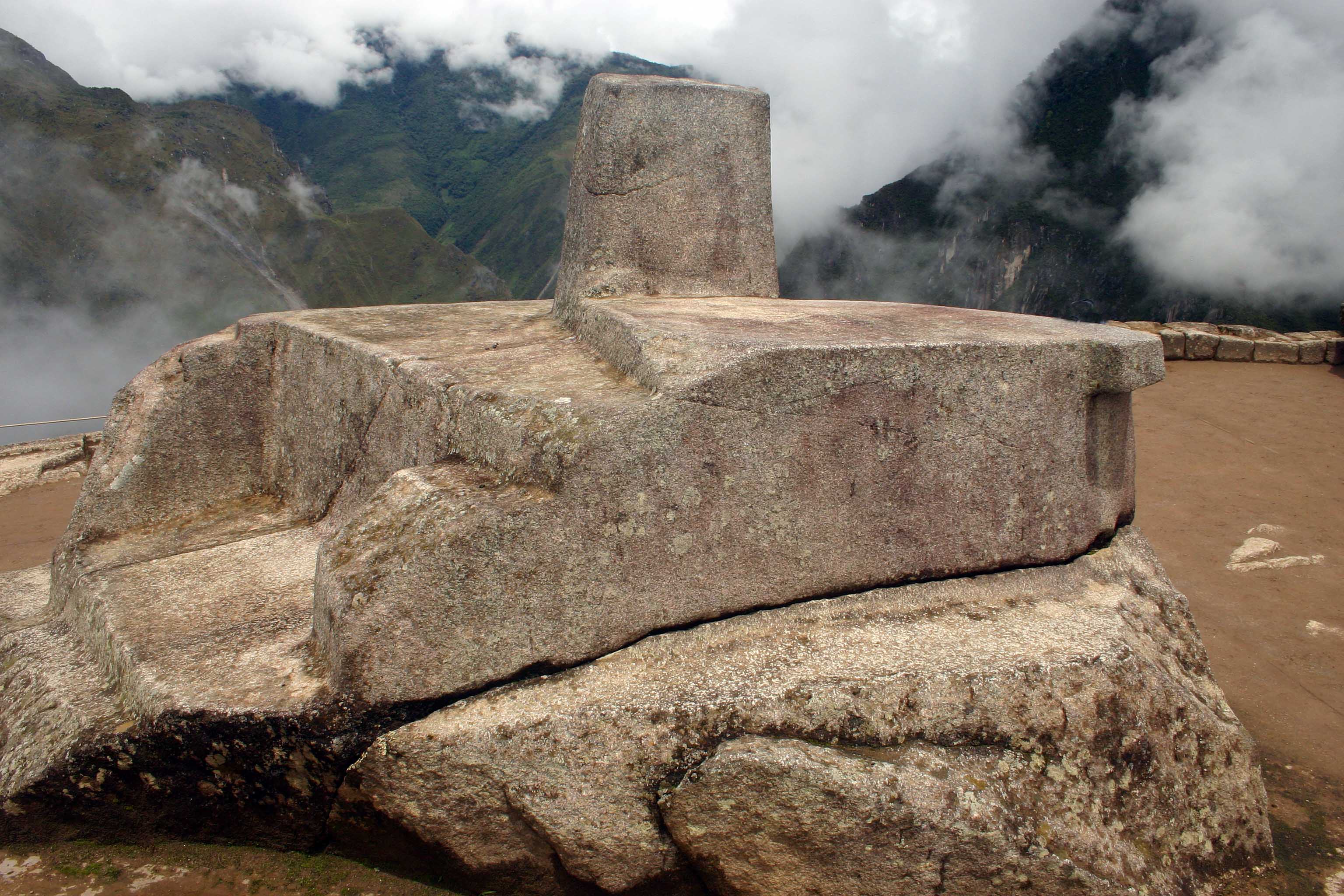
The Famous Intihuantana, or “Hitching Post of the Sun,” a sundial that also measured the equinoxes at Machu Picchu)
Peru: ‘Sensational’ Inca Find For British Team In Andes
Discovery of Sacred Ancestor Stones Has Archaeologists ‘Dancing a Jig’
Dec 5, 2010
The Guardian
A British team of archaeologists on expedition in the Peruvian Andes has hailed as “sensational” the discovery of some of the most sacred objects in the Inca civilisation – three “ancestor stones”, which were once believed to form a precious link between the heavens and the underworld.
(more…)
Yale Agrees To Return Machu Picchu Artifacts to Peru
Peru President Says Yale to Return Inca Artifacts
Nov 20, 2010
The Associated Press
LIMA, Peru — Peru’s president announced Friday that Yale University has agreed to return thousands of artifacts taken away from the Inca citadel of Machu Picchu nearly a century ago.
(more…)
Inca Burial Ground Shows Evidence of Spanish Conquest
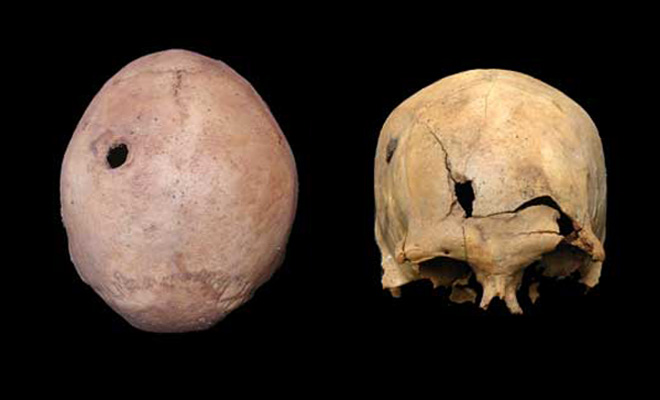
Evidence of Spanish bullet holes in 500-year-old Inca skulls, found at a burial site on the outskirts of Lima, Peru
Inca Skeletons Show Evidence of Spanish Brutality
Science News
April 2, 2010
If bones could scream, a bloodcurdling din would be reverberating through a 500-year-old cemetery in Peru. Human skeletons unearthed there have yielded the first direct evidence of Inca fatalities caused by Spanish conquerors…
(more…)
Spanish-Peruvian Explorers Reach Cliff With Image of Incan Rebel King
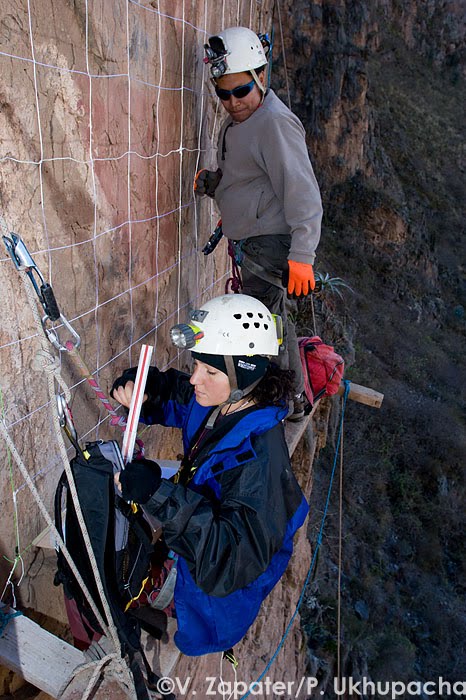
Ukupacha Project Investigators Study Portrait of the Rebel Incan Emperor Manco Inca
Spanish-Peruvian Team Succeed in Reaching Rock Art Wall of [Emperor] Manco Inca II
The painting was completed over 400 years ago on a cliff in the Sacred Valley of the Incas
August 9, 2009
(ANDINA)
(Translation: K. MacQuarrie)
(Note: in 1536, a 19-year-old Incan emperor named Manco Inca rose up against the Spaniards and led a massive rebellion that almost succeeded in wiping Francisco Pizarro and his conquistadors out. The young Inca king later retreated to the rugged area of Vilcabamba, about 90 miles from Cusco, a region from where the Incas carried out guerrilla warfare against the Spaniards for the next 36 years. The last Incan emperor, Tupac Amaru, was beheaded in Cusco in 1572, ending the Inca Empire: KM).
(more…)










